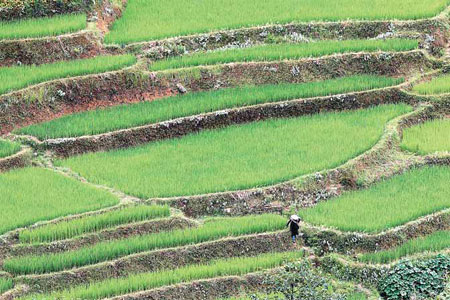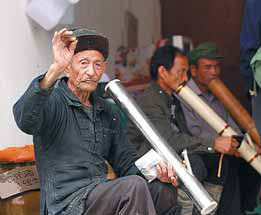Terraces on top of the world
Updated: 2013-07-26 08:33
By Hu Yongqi and Li Yingqing (China Daily)
|
||||||||
|
A bird's eye view of Hani rice terraces in Yuanyang county, Yunnan province. Photos by Zhang Wei / China Daily |
|
Hani men enjoy their leisure time in Yuanyang. |
The addition of a site in Yunnan province to the World Heritage list is likely to guarantee the continuing survival of traditional Hani culture, as Hu Yongqi and Li Yingqing report from Honghe, Yunnan.
Thick fog enveloped the mountains and hills in Xinjie township, Yuanyang county, on a morning in early July, a noted period of heavy rains in Yunnan province. When the wind blew, the Hani rice terraces dominated the view as they climbed one above the other, providing a picture-perfect example of traditional land layering.
Not far from the rice paddies, Li Zhengfu, 38, was one of many early birds up and about in Dayutang village at 7 am. As a member of the local catering industry, Li was busily preparing dishes for the tourists who would soon arrive in their droves.
His restaurant, located in his three-story home and subsidized by the local government, can serve traditional Hani cuisine to 120 people at each sitting. Li and his family can earn an annual net income of more than 40,000 yuan ($6,515), almost double the wage of a construction worker.
Fortune smiled on Li and the other residents of Yuanyang, the heartland of the Hani people, when the 1,300-year-old terraces were added to the UNESCO World Heritage List on June 22. The site is the first to be named after an ethnic group and brings the number of World Heritage sites in China to 45, second only to Italy.
Preservation is key
The Hani terraces have been superbly preserved in four counties of Honghe Hani and Yi autonomous prefecture, across an area of 160,000 hectares. In Yuanyang alone, 16,000 hectares feed 82 villages.
The prefecture government first applied to be added to the UNESCO list in 2001, and although the process took 12 years, the hard work finally paid off.
Before 2009, old-fashioned dirt roads made travel difficult and a lack of decent vantage points prevented visitors from getting a good view of the paddies, especially in autumn when the water reflects sunlight like a mirror.
At the time, the food in the local restaurants was of poor quality and conditions were less than sanitary. A dearth of decent hotels meant tourism was restricted to day trips and visitors were forced to return to the county seat in Nansha township at night. Unsurprisingly, the farmers who cultivated the terraces derived little benefit from tourism.
The Yuanyang county government was farsighted and recognized the area's potential. In late 2009, it brought in Expo Tourism Co, based in the provincial capital, Kunming, to develop tourism on the terraces. A sealed highway that linked four large villages was laid, enabling tourists to undertake a 45-km round trip that passes through 82 villages.
The Hani terraces are Yunnan's fifth World Heritage site, alongside sights such as the Old Town of Lijiang and the Stone Forest. Recognition hasn't always been a boon, though; as tourism developed and visitor numbers swelled in Lijiang, many of the native Naxi people fled the city, which had become unpleasantly overcrowded in peak season.
In 2007, the Stone Forest in Kunming was declared a World Heritage site and three years later the number of visitors to the attraction in the Karst landscape had tripled. Although the extra income was welcome, the large number of visitors threatened to damage the environment and swamp the local culture.
That experience has set experts thinking about the best way to avoid a similar problem at the Hani terraces.
The terrace in Yuanyang, a core area of traditional farming techniques in Honghe, is expected to welcome 1.5 million visitors this year, an increase of 60 percent year-on-year, said Lu Jianguo, director of the county's tourism bureau. "At present, there are no plans for any further construction work in the terrace area. The most important thing is to keep the terrace intact," he said.
Honghe's 1.26 million Hani population accounts for more than half of all the people living in this ecosystem of forests, villages, rice terraces and rivers. The water flowing through the forest forms streams and small rivers that provide drinking water for the villagers and irrigate the rice terraces.
In every village, a stone monument has been erected at the "water entrance" to the fields and on Hani New Year's Day, which falls in late October or early November, the locals worship the water god and pray for a good harvest.
Expo Tourism spent more than 120 million yuan on the construction of the scenic sites that surround the terrace areas. However, the number of buildings contravened UNESCO regulations and so several were demolished, resulting in a loss of 13 million yuan for the company.
Li Shufa, deputy general manager of Expo Tourism, said no new permanent buildings will be erected on the site and the local government is attempting to strike a balance between the development of tourism and local culture.
"I don't want my people to become 'performers'. The Hani people were born to continue the history of the terraces," said Zhang Hongzhen, director of the Honghe Hani Terraces Protection Bureau.
Lyu Yasha, director of the Honghe tourist bureau, echoed Zhang's comment, saying the terraces showcase respect for nature and indicate the Hanis' reluctance to abandon their land and traditional farming techniques.
She believes that the Hani and other ethnic groups that cultivated Honghe's terraces were at the center of the area's development. "It's a quick and efficient way of raising the locals' standard of living. They should also enjoy the fruits of tourism," she said.
Food for thought
Dayutang's six restaurants were built in 2009 with the support of the prefecture government via an interest-free loan of 100,000 yuan and a one-time stipend of 30,000 yuan.
Since it opened, Li's restaurant has catered to a wide range of visitors, who carry high-quality cameras to take photos of the terraces next to the house. The food is either his own produce or is purchased from neighbors, ensuring the fare is "100 percent natural and no chemicals are used".
Local dishes, such as buckwheat cakes, take pride of place at the top of the menus. Eels and loaches are also popular dishes. They mature in the rice fields but are "not fed contraceptives (which increase body mass) in aquaculture farms", according to the villagers.
"I used to work in distant towns and cities, but I was unable to take care of my children. Now things have changed and I don't want to leave my family, so I focus on producing the best food I can," said Li.
The clean, tidy village looked vastly different in the old days, when the pigs wandered free and their droppings covered the dirt road. The power supply was unstable and the 50 houses were so outdated and filthy that visitors would not approach them, despite the delicious food on offer.
The dilapidation was so bad that the local tourist bureau organized a series of training sessions for the villagers and now the houses, all boasting traditional mushroom-shaped ceilings, are spotlessly clean. Cows and pigs are kept in specially erected sheds.
However, it's a slow process and 73 other villages in the scenic area have yet to embrace change. Once the rice is planted safely in early June, the workers travel far and wide to earn additional income, only returning for the harvest in late September.
In the past, roughly one-third of Dayutang's labor force migrated to cities, such as the prefecture capital, Mengzi, for temporary work, a common practice in rural areas. In 2012, the annual per capita net income for farmers in Yuanyang was 3,600 yuan. Although that's an increase of more than 100 percent from 2007, the figure is still just half the national average.
"The most important thing for the Hani terraces is to keep the farmers on the land. Only in this way can the legacy be upheld and the culture displayed," said Zhang.
Lu of the tourism authority said the "treasure" would have been ruined if the farmers had left their homes to seek work in other areas.
To that end, the bureau initiated the "Beautiful Homes Project" to help residents provide food and accommodation for visitors. By 2020, every household in the terraces' scenic area will serve food and have at least one bed for visitors.
Yuanyang government said the scenic area will receive around 10,000 visitors a day and more accommodation will be required. At present, centers such as the townships of Xinjie and Nansha have just 5,000 beds. Houses will be rebuilt in 73 villages, including Xiaolinggang. Li Zhiguang, the village head, said the 51 households were each given a stipend of 30,000 yuan and the residents are looking forward to seeing the new accommodation and welcoming visitors into their homes.
Li Zhengfu is confident tourism will benefit the area and is determined to emulate his ancestors by staying on the terraces and protecting his heritage. "We will try our best to maintain the terraces, but who knows what will happen if too many visitors arrive?" he mused.
Guo Anfei contributed to this story.
Contact the writer at huyongqi@chinadaily.com.cn
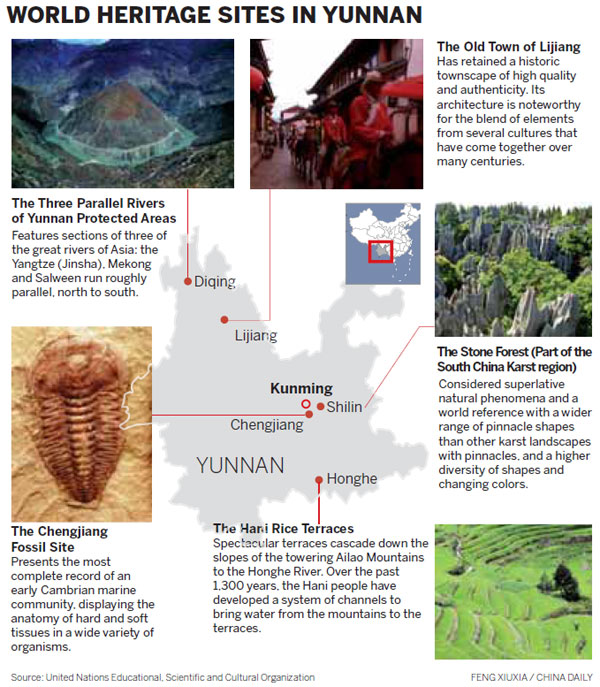
(China Daily USA 07/26/2013 page6)

 Top DPRK leader meets Chinese vice-president
Top DPRK leader meets Chinese vice-president
 US does not plan decision on Egypt coup
US does not plan decision on Egypt coup
 Bo Xilai indicted for corruption
Bo Xilai indicted for corruption
 Korean War veterans return to peninsula
Korean War veterans return to peninsula
 Tourist safety a priority in S China Sea
Tourist safety a priority in S China Sea
 Death toll in Spain train crash rises to 77
Death toll in Spain train crash rises to 77
 Royal baby named George Alexander Louis
Royal baby named George Alexander Louis
 'The Grandmaster' takes center stage
'The Grandmaster' takes center stage
Most Viewed
Editor's Picks

|

|
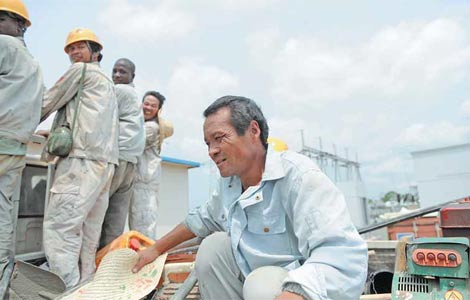
|
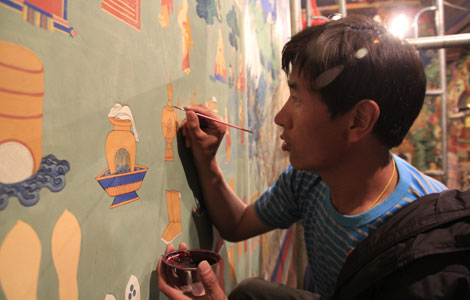
|

|

|
Today's Top News
Flights over sea 'routine training'
US does not plan decision on Egypt coup
Congress approves NSA spying program
Japanese PM unlikely to visit Yasukuni Shrine
Girl, 2, thrown to ground; suspect detained
Crackdown a bitter drug to herald changes
Indictment shows CPC's stance
China's VAT reform to benefit more businesses
US Weekly

|

|
